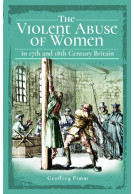Children's Homes (ePub)
A History of Institutional Care for Britain’s Young
Imprint: Pen & Sword History
File Size: 17.6 MB (.epub)
Pages: 310
Illustrations: 130 illustrations
ISBN: 9781526701374
Published: 2nd August 2017
Top Choice!
'A comprehensive history of the various British institutions that have provided care for children and young people over past centuries' - Family Tree magazine, November 2017
| Other formats available | Price |
|---|---|
| Children's Homes Paperback Add to Basket | £16.99 |
What image does the word ‘orphanage’ conjure up in your mind? A sunny scene of carefree children at play in the grounds of a large ivy-clad house? Or a forbidding grey edifice whose cowering inmates were ruled over with a rod of iron by a stern, starched matron? In Children's Homes, Peter Higginbotham explores the history of the institutions in Britain that were used as a substitute for children’s ‘natural’ homes. From the Tudor times to the present day, this fascinating book answers questions such as: Who founded and ran all these institutions? Who paid for them? Where have they all gone? And what was life like for their inmates? Illustrated throughout, Children's Homes provides an essential, previously overlooked, account of the history of these British institutions.
As featured in
Who Do You Think You Are
This is a book for every library, a must-read for trainees in caring professions and, of course, an essential reference in family-history centres.
Aberdeen and North East Scotland FHS - reviewed by Betty Jordan
In this way, the book is exactly what it promises to be, a descriptive
Lieselot De Wilde, History of Education
history of institutional care for Britain’s young.
Author featured as expert in Jonathan Scott's 'Best Website's' article
WDYTYA? Magazine, April 2019
Peter Higginbotham is a well-known writer of several books and a website on the Workhouse. His latest book concerning Children’s Homes is just as fascinating and comprehensive, and he has a Children’s Homes website at www.childrenshomes.org.uk
Cheshire FHS
Children’s Homes explores an astonishing array of institutions from as early as the mid-16th century. As well as charity schools and homes or ‘asylums’ for orphans, there were local authority, religious and occupational homes, reformatories, ragged, industrial, truant and approved schools, training ships,institutions for impoverished children or those with special needs, and ‘boarding out’ (what we know as fostering today).
This book looks at the evolution of children’s homes as society changed. There are chapters on Barnado’s Homes, The National Children’s Homes, Religious Homes, Local Authority Homes, life in Children’s Homes and much more.
Finding family members who were residents of Children’s Homes is no easy task as many homes no longer exist and, until recently, there was no legal requirement for records to be preserved. The final chapter of the book supplies resources, useful websites and practical advice to help researchers to try to trace an ancestor or relative who found themselves in care, and learn a little more about their lives.
This book is exactly as it describes itself, a history of the care of children. In this case we are talking about orphans, waifs, strays, kids who today would be in the care of social services. The author has chapters discussing the different charitable and governmental organizations that had responsibility for the care of these children. There is also a look back at the development of child care philosophy, from large institutional care to the foster system we are more familiar with today. The author discusses the most prominent movers and shakers in the history of children’s homes and also some of the lesser known lights. The book concludes with a discussion of day to day life in the different types of children’s homes and some of the more notable instances of abuse.
A Line from a Book - Jennifer Sahmoun
I found this book to be another well written history of a social issue in Britain. It’s a very approachable book and not a heavy history tome. I really appreciated learning about how social services for children got to where they are today and how they have changed along with the changing of the surrounding culture. All in all, an enjoyable look at a critical but often overlooked social issue, probably best enjoyed by those interested in these issues.
See the review online here.
Author talk as featured by
Darlington and Stockton Times, 18th May 2018
Author talk as featured by
Darlington and Stockton Times, 11th May 2018
An informative and all-embracing history of children's homes, from the feared to the idyllic, which will be useful as a reference work to social historians and also as a guide to family historians tracing life stories of ancestors who, as children, may have been in residential care as orphans or of destitute parents in the late 19th and 20th Century.
Essex Family Historian No.164
Peter Higginbotham's book about children in orphanages, reformatories, industrial schools and similar institutions is fascinating.
Glasgow & West of Scotland FHS
An absolute must for anyone whose relative was brought up in an institution, even if briefly.
This is an exhaustive and wide-ranging history from an author well-known for his research and books on workhouses. He explores the history of institutions set up in Britain to provide 'substitute homes' for children who, for whatever reason, were deprived of normal family life.
Bristol & Avon Family History Society
The book explains how and why they were founded, who ran them, how they were funded, what life was like for children living in them, and what eventually happened to them all.
Higginbotham, already well known for his work on Workhouses www.workhouses.org.uk, has provided us with a detailed survey of the provision made for destitute children in the course of the last few centuries. Anyone who has an interest in the history of childhood or of social services will need to consult this book. It should be used in conjunction with Higginbotham’s website, ‘Childrens Homes’ www.childrenshomes.org.uk. This provides brief details of the thousands of institutions that have provided homes for Britain’s destitute, orphaned, crippled, and criminal children over the centuries.
Federation of Family History Societies
This fascinating book surveys the range of institutions that supported these unfortunate children, looking back as far as Tudor times and working forward to the current day. It investigates who founded and ran these institutions, who paid for them and gives an insight into what life was like in them. The book is beautifully illustrated with a large number of monochrome prints and photographs and, usefully for family historians, provides information about where to find surviving records.
Liverpool Family Historian
A valuable addition to the family history research bookshelf and one that I am sure readers will go back to.
One comes to the end of Peter Higginbotham’s magnificent history of the institutional care of children in Britain with a single sad reflection: “That it should come to this!”
Church Times
Alongside homes for children in England (i.e. ones that teach an occupation, delinquent reform, foster children, immigrant children, children of families affected poverty, undergoing disabilities), there are homes and civic services performed for 'fallen women' (or Magdalen homes) and children who are sent to Canada. It was very interesting to learn about an individual schools (or series of schools in a multitude of locations) and their uniforms, credo, being based around a village or farm, their meals and daily schedules, evidence of abuse, punitive discipline, training ships for children who wanted to join the Marine Society and Royal Navy, homes that were part of WWII evacuation, and their noted financial endowments.
GoodReads, Kristine Fisher
From Tudor times onwards, this fascinating book answers questions such as: Who founded and ran all these institutions? Who paid for them? Where have they all gone? And what was life like for the children who lived in them? Illustrated with more than 100 archive photographs, Children's Homes unearths a largely overlooked aspect of social history, offering a compelling account of the institutions which were set up to provide a substitute for children's 'natural homes'.
Telegraph & Argus (Bradford), 20th January 2018 by Emma Clayton
A detailed analysis of the many institutions which have cared for our young from Tudor times onwards.
Evergreen, Winter 2017
Children's Homes cannot be faulted on its extensive information on all manner of children's homes, but this is not to the detriment of the narrative, which ensures keeping the reader's interest throughout.
Suffolk FHS
Peter Higginbotham is known for his expertise on workhouses, so it is no surprise he has written about institutions for children in care. It is a well-researched overview of children's homes, starting with Christ's Hospital, given by Henry VIII to the City of London for relief of the poor.
Who Do You Think You Are? Magazine, November 2017 - reviewed by Janet Sacks
'Meet the author' feature & review
Your Family History, November 2017
Peter Higginbotham's expertise is something to marvel at. Since 2000 he has painstakingly built up a website which is quite simply the definitive guide to the workhouse system, aided by his numerous books on the subject. As if this weren't quite enough, since 2012 he has applied his same meticulous approach to the subject of children's homes and orphanages. This is his first major book on the subject, and any family historian with forebears who spent their childhood in an institution of this kind will benefit from a copy.
Read it for: An expert, authoritative guide to the history of children's homes in Britain
As featured in
Antiques Diary, November - December 2017
That this book is well-researched is very evident...
NZ Crown Mines
The mater of the Index notwithstanding, it is possible that this volume may become a major research-tool for those interested in British social history, orphanages, child welfare and the evolution of child foster care within Great Britain.
As featured in
Ilkley Gazette
About Peter Higginbotham
Peter Higginbotham is an established author, best known for his work on the workhouse through six books (The Workhouse Encyclopedia, Grim Almanac of the Workhouse, Workhouse Cookbook etc.), his website workhouses.org.uk, magazine articles, and participation in TV programmes such as Who Do Think You Are? and Heir Hunters. In recent years Peter been extensively researching the history of children’s homes, which he details in his website http://www.childrenshomes.org.uk/.















